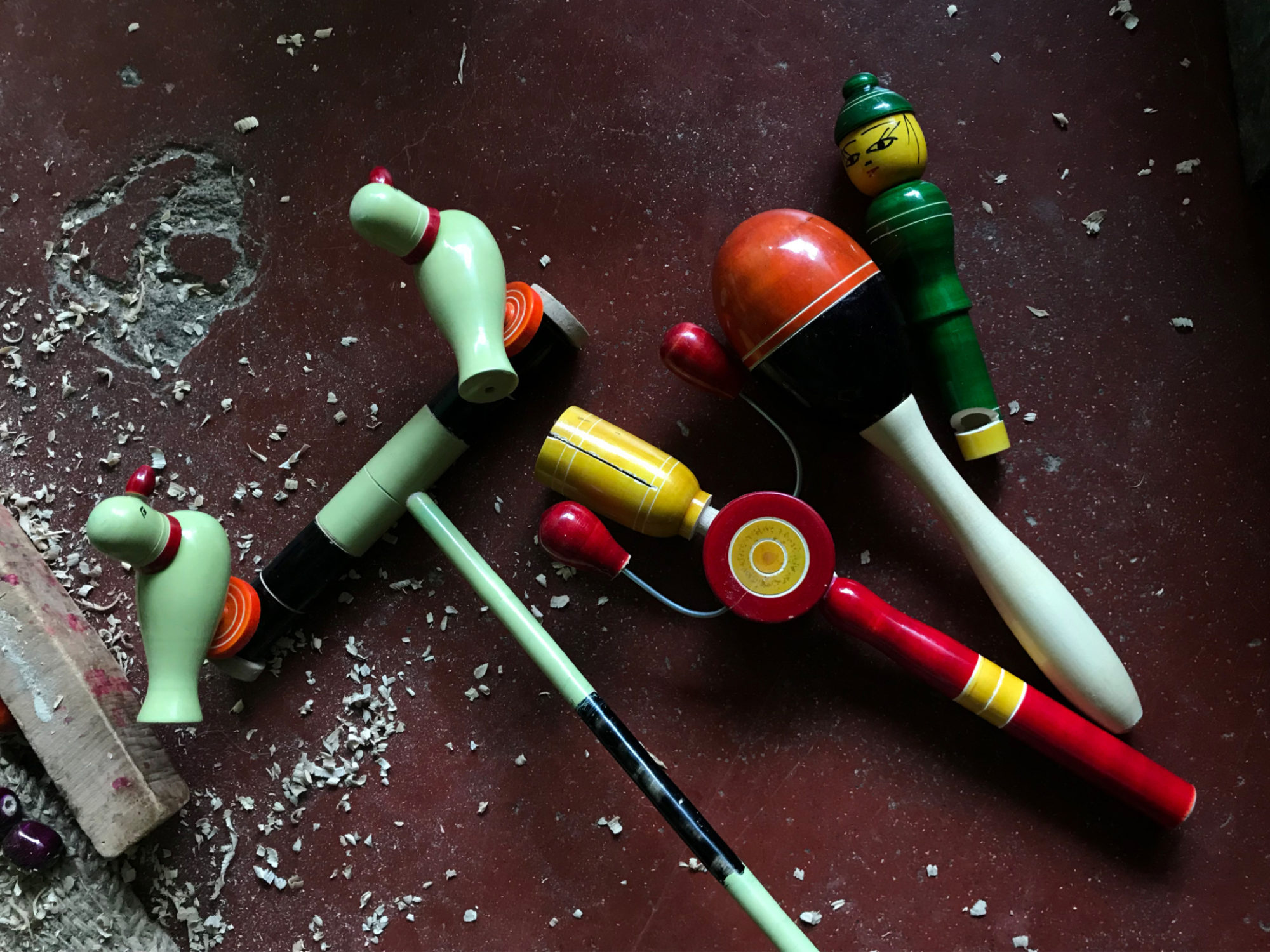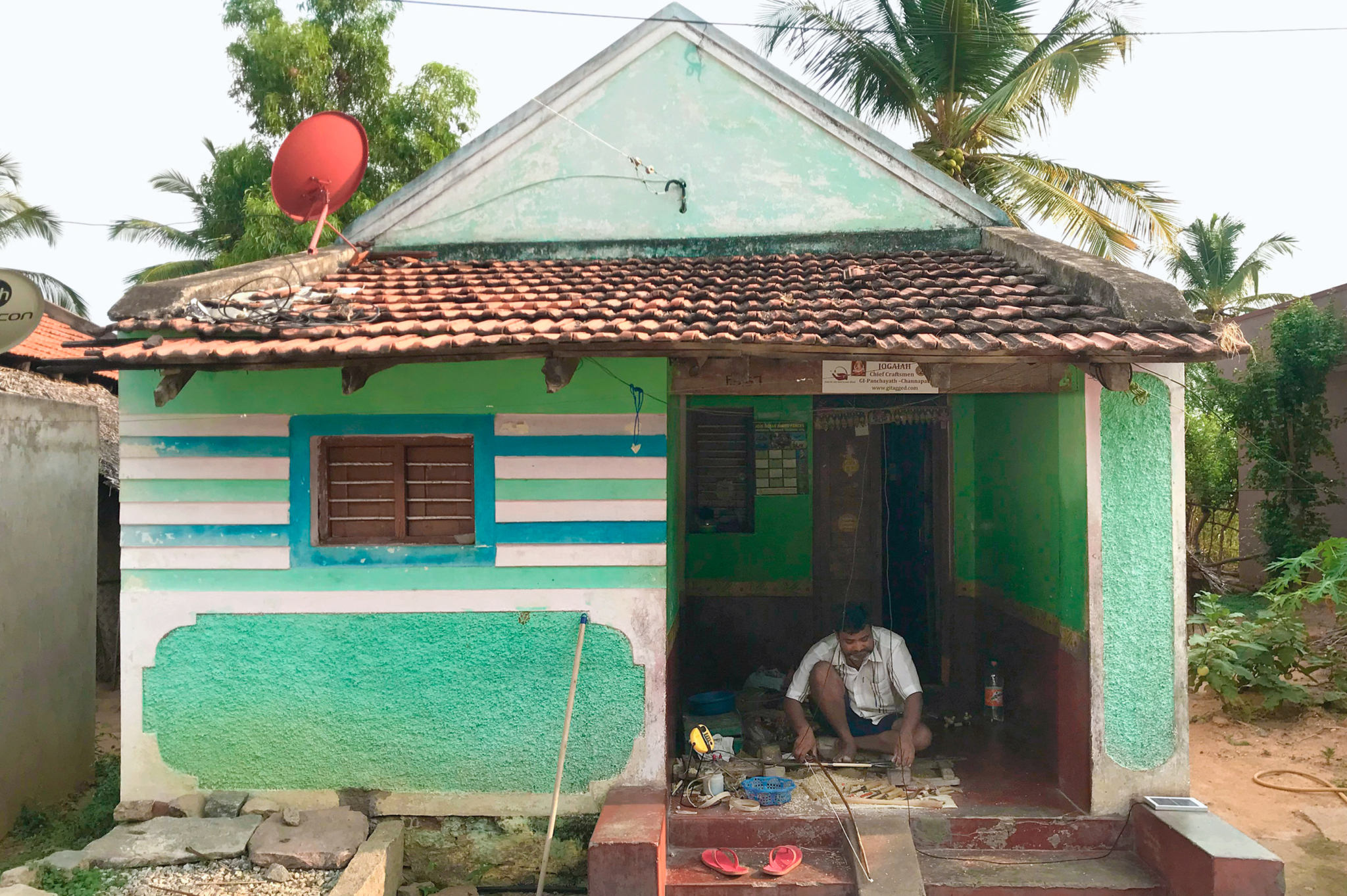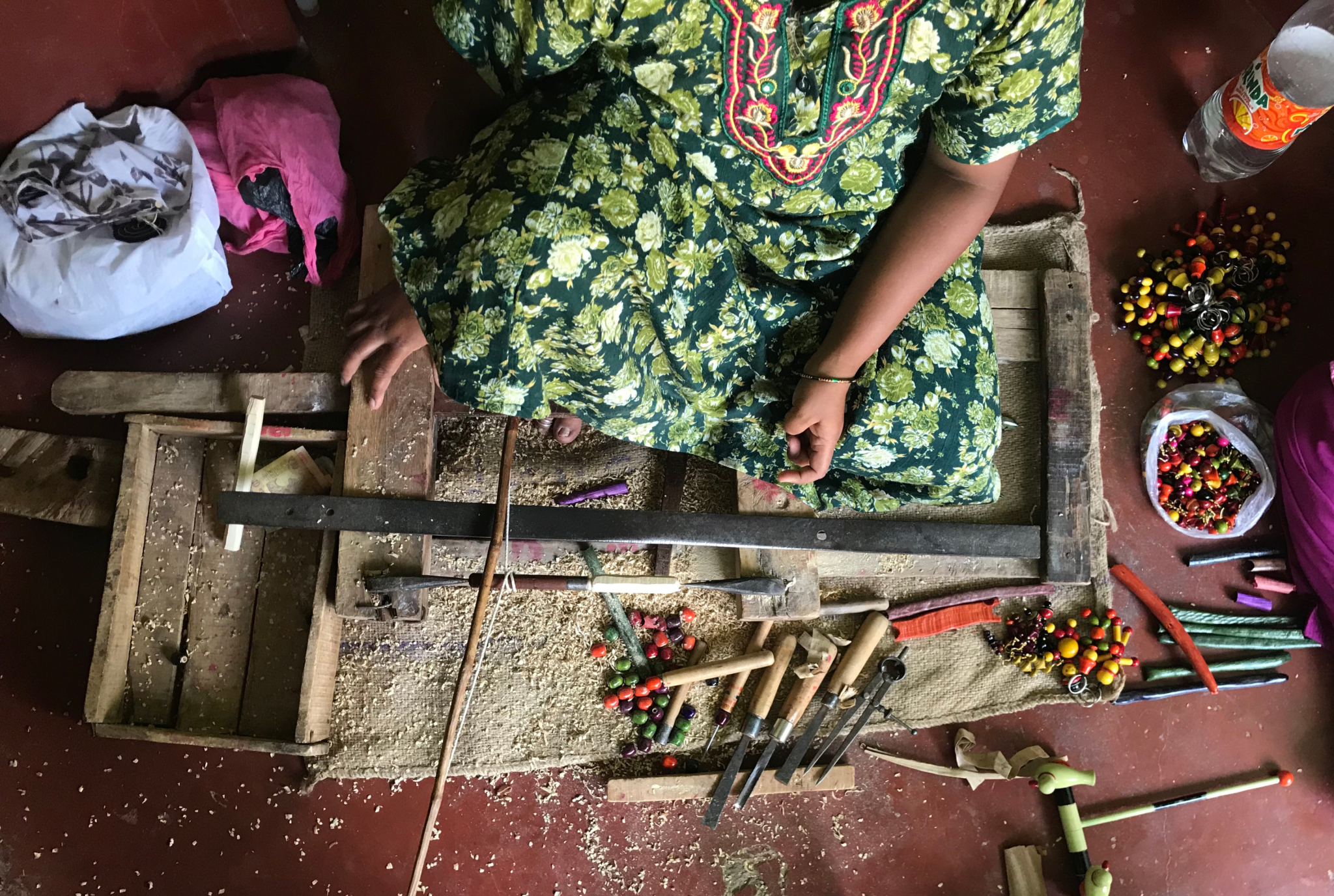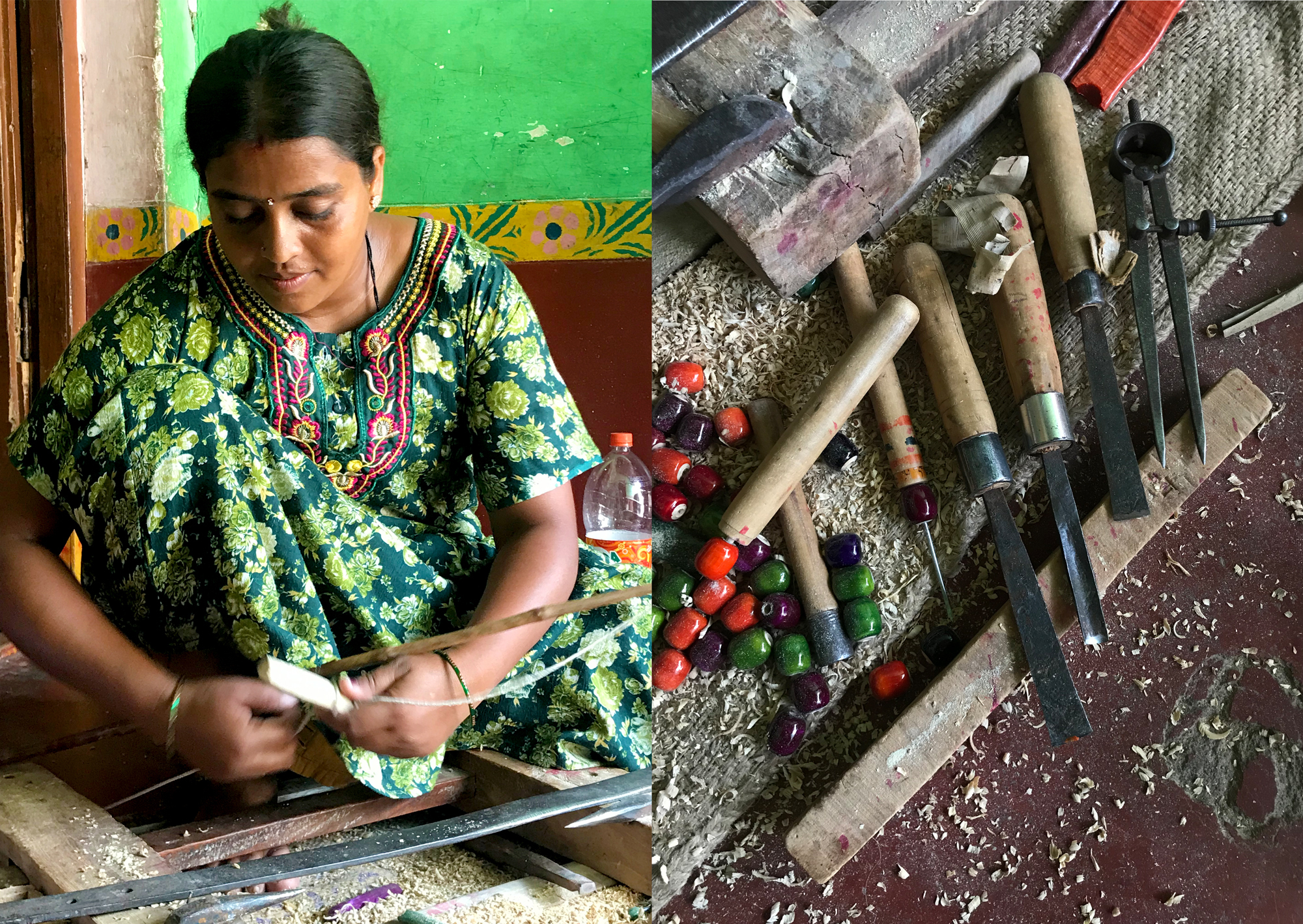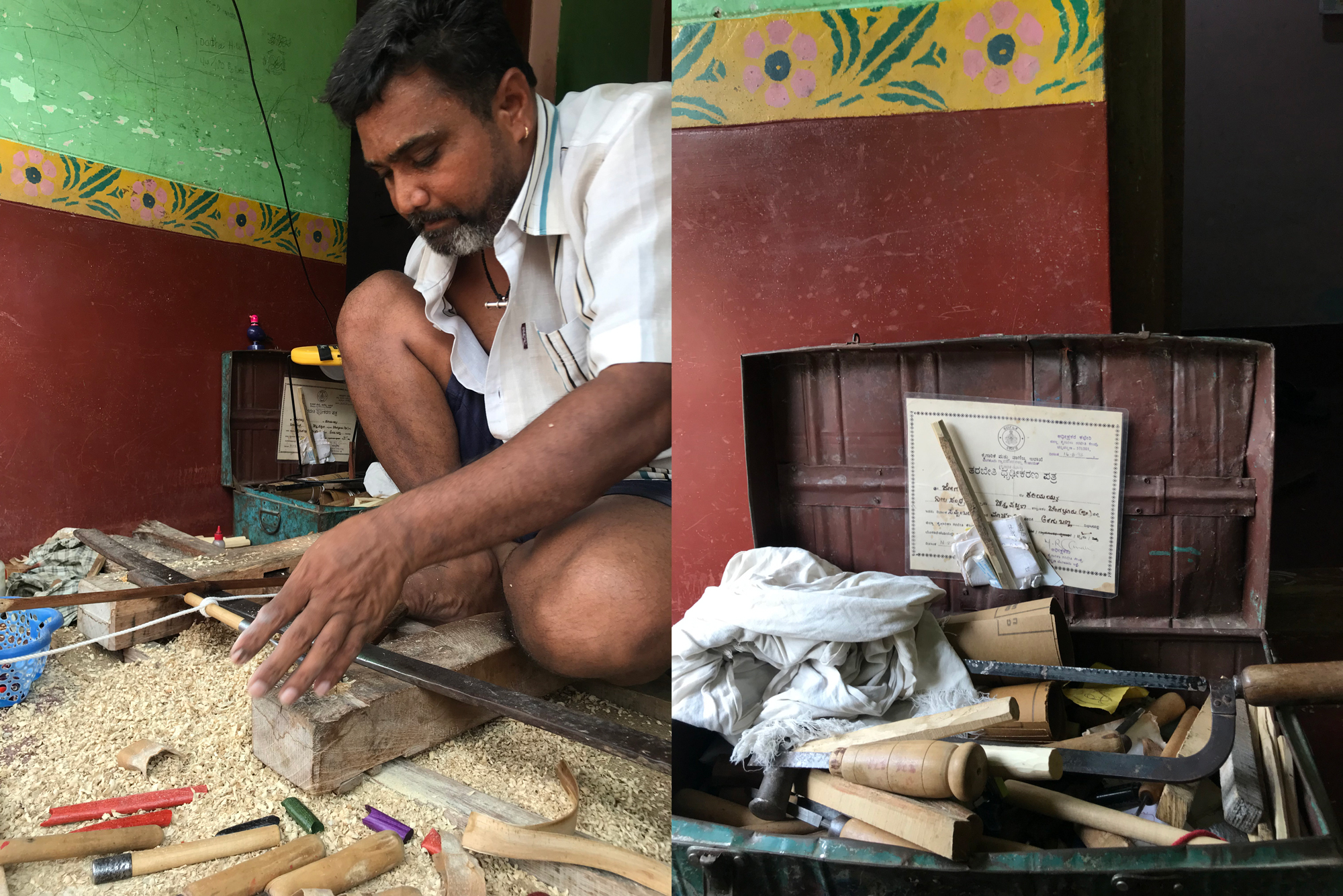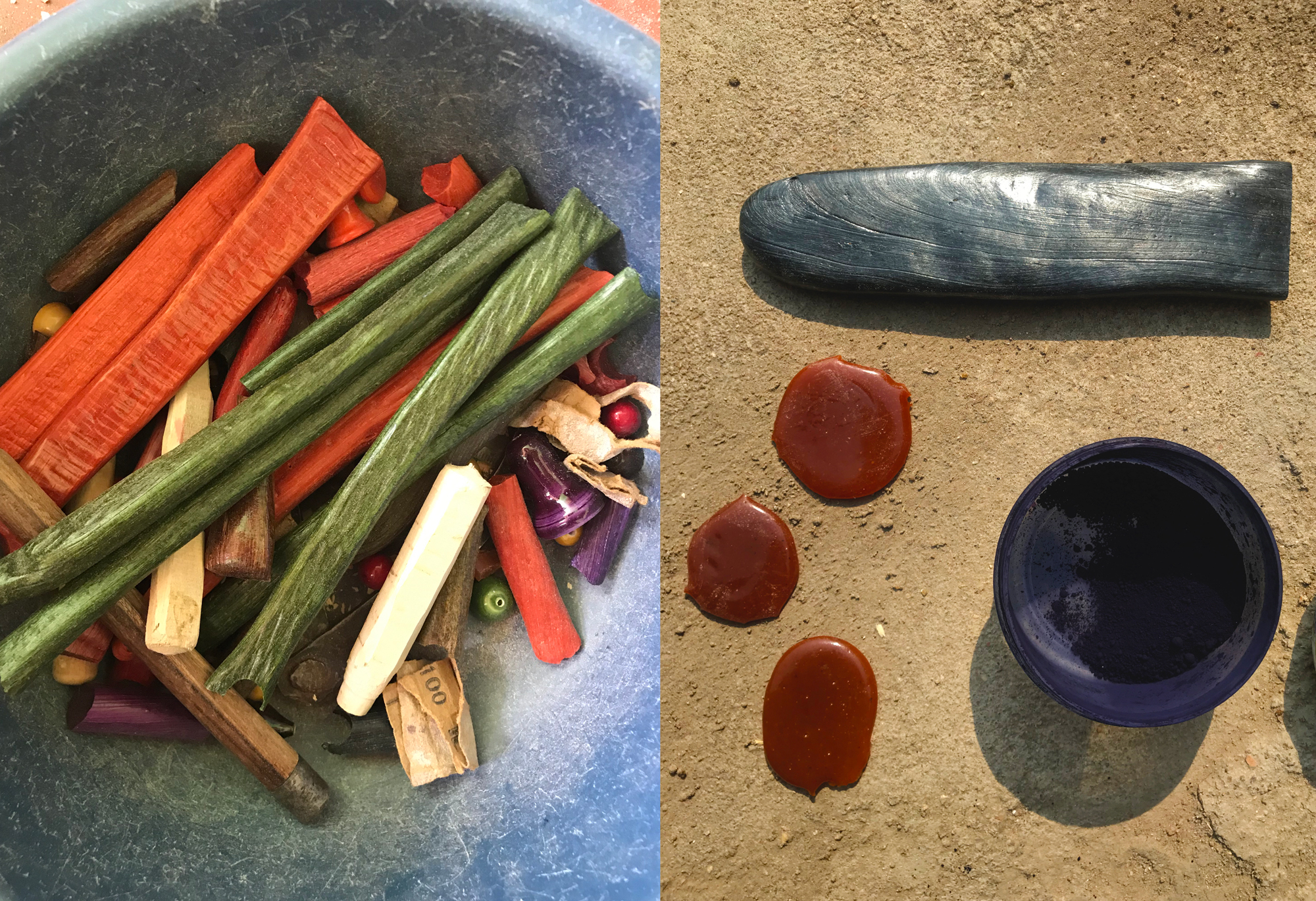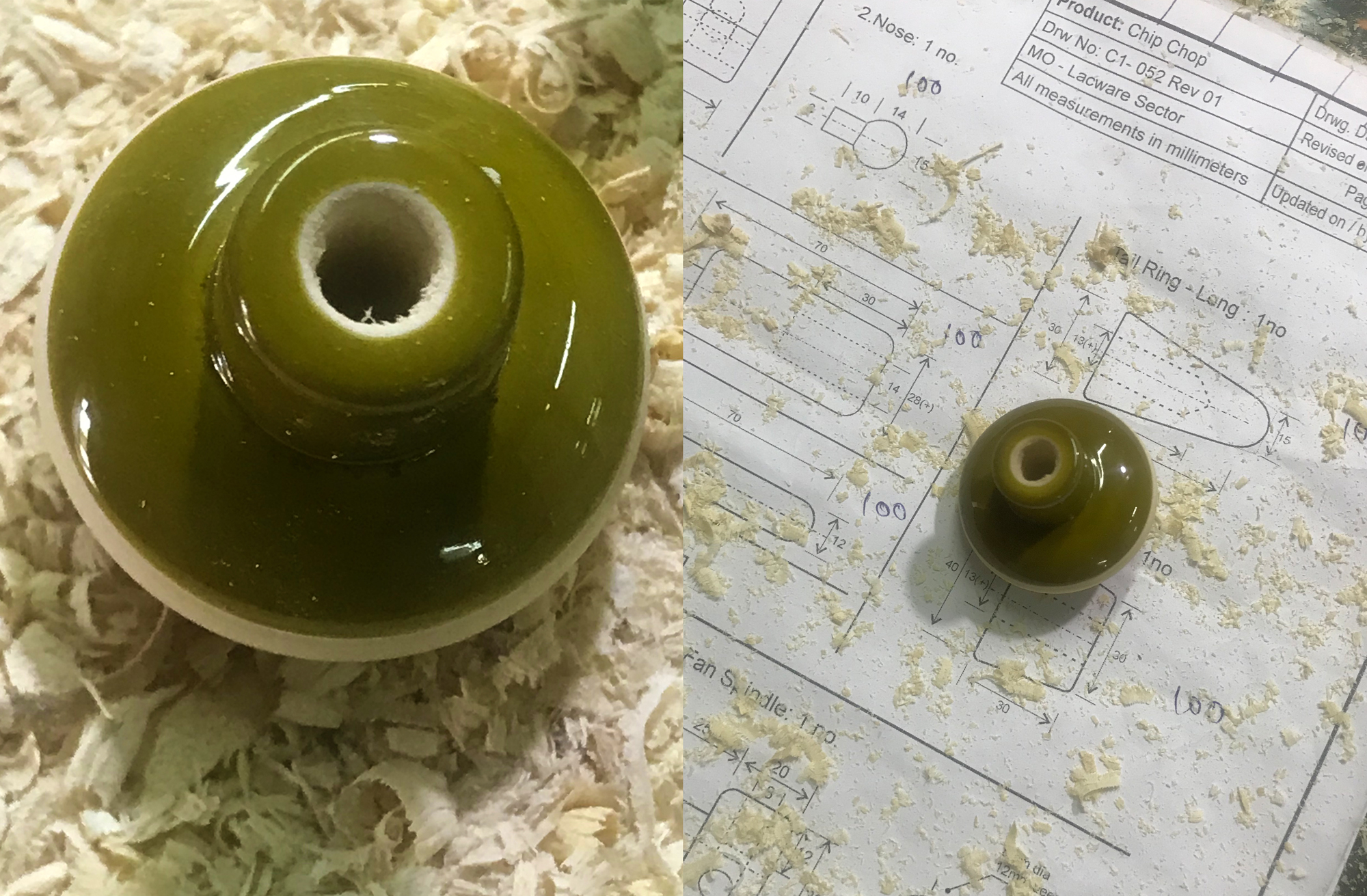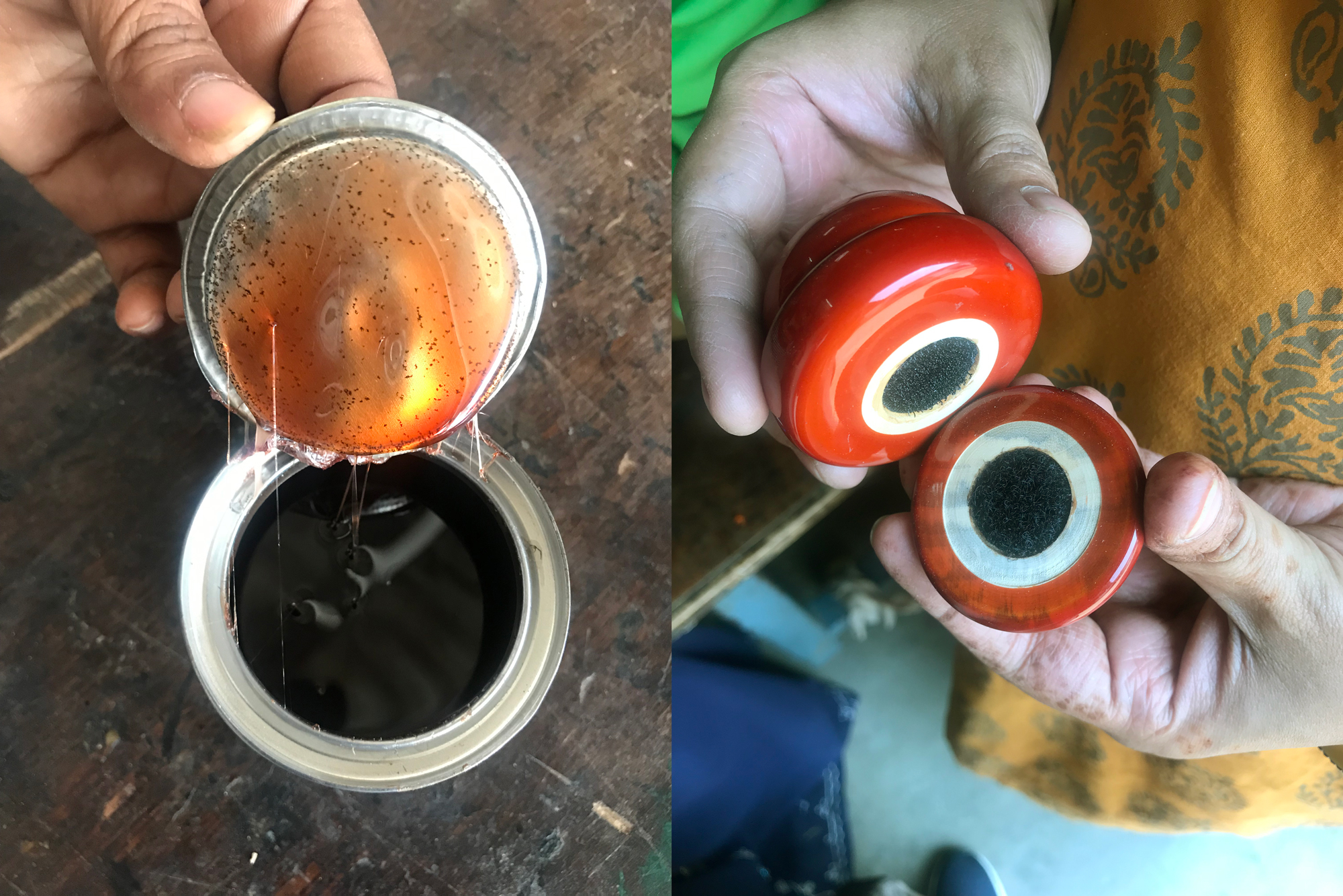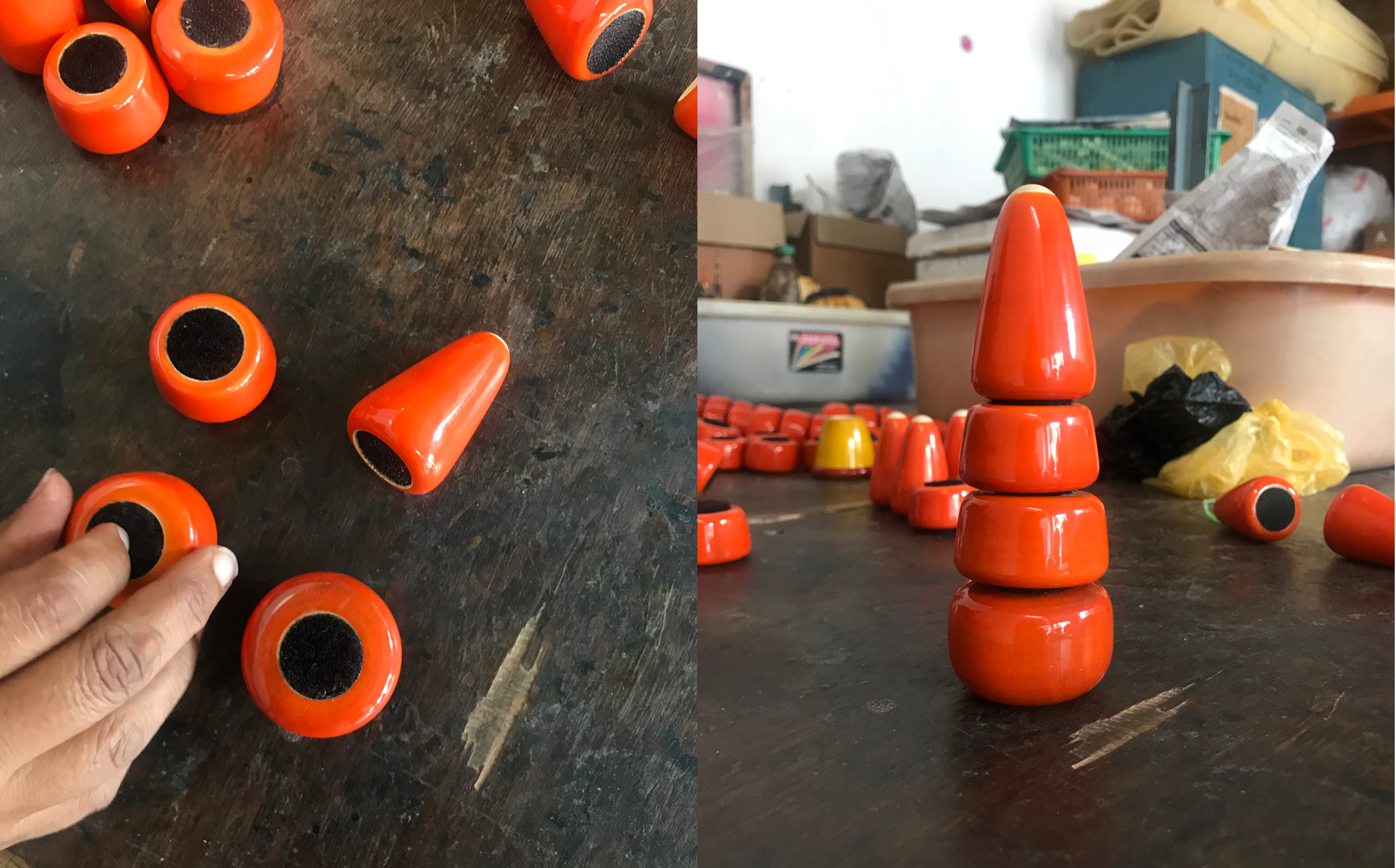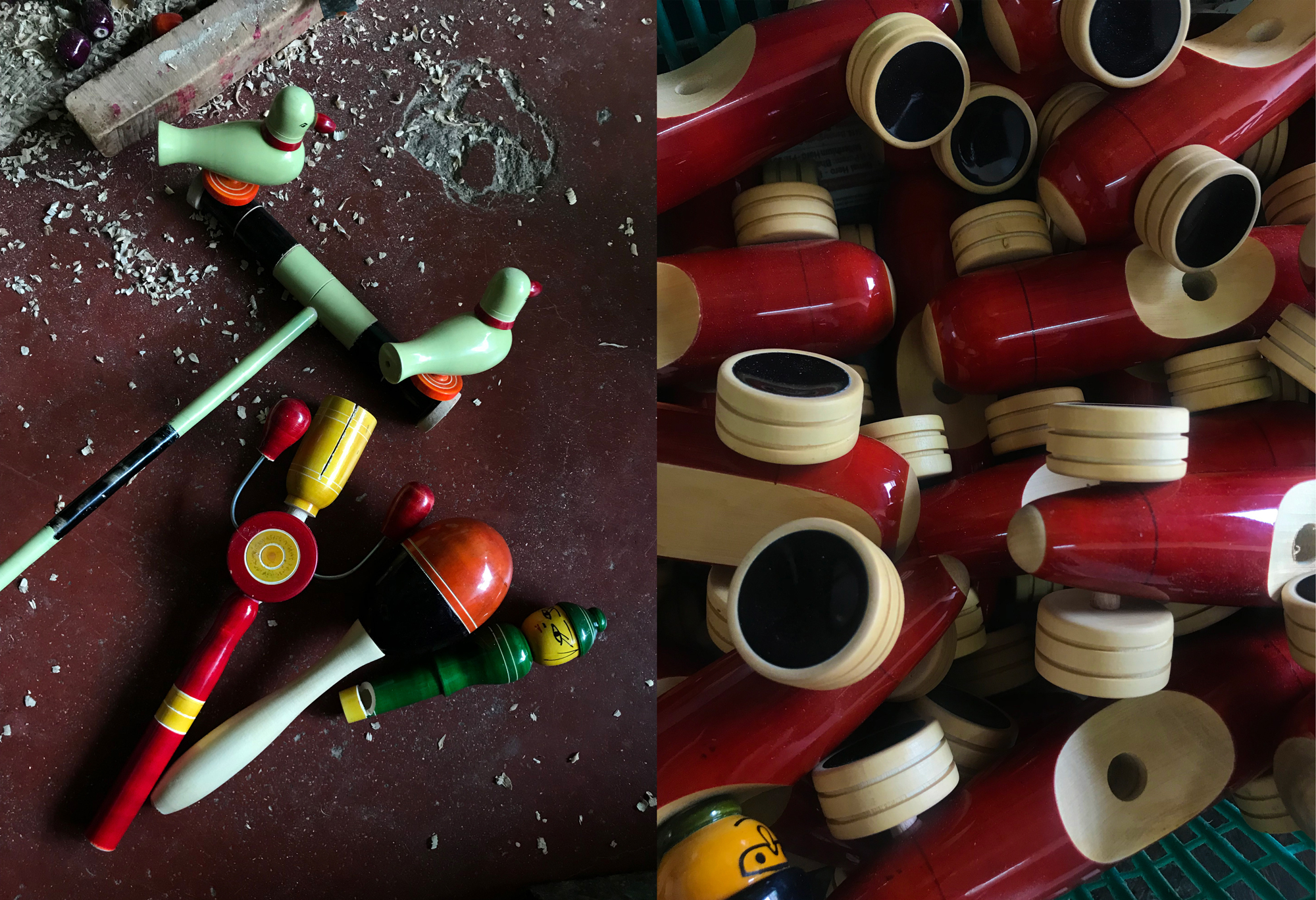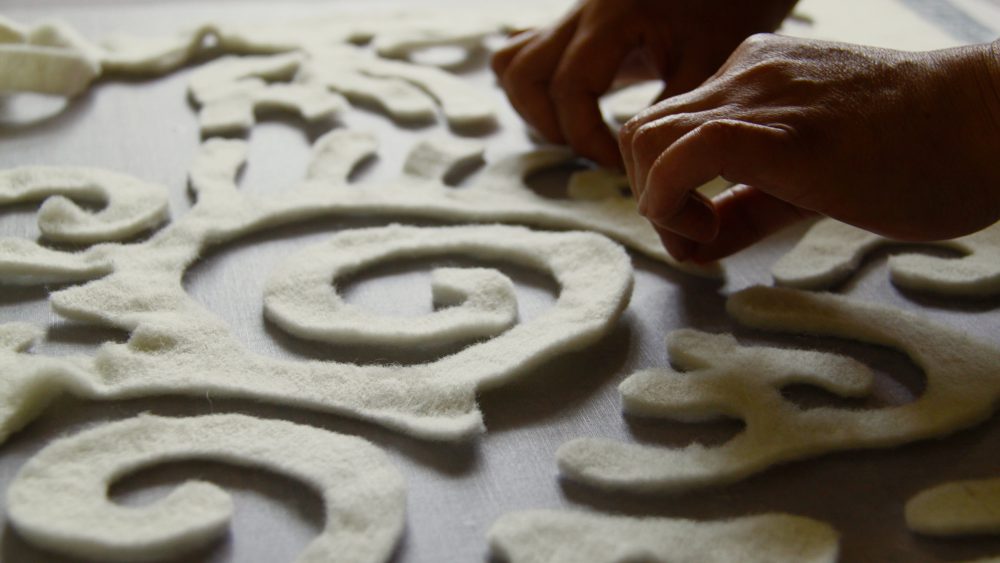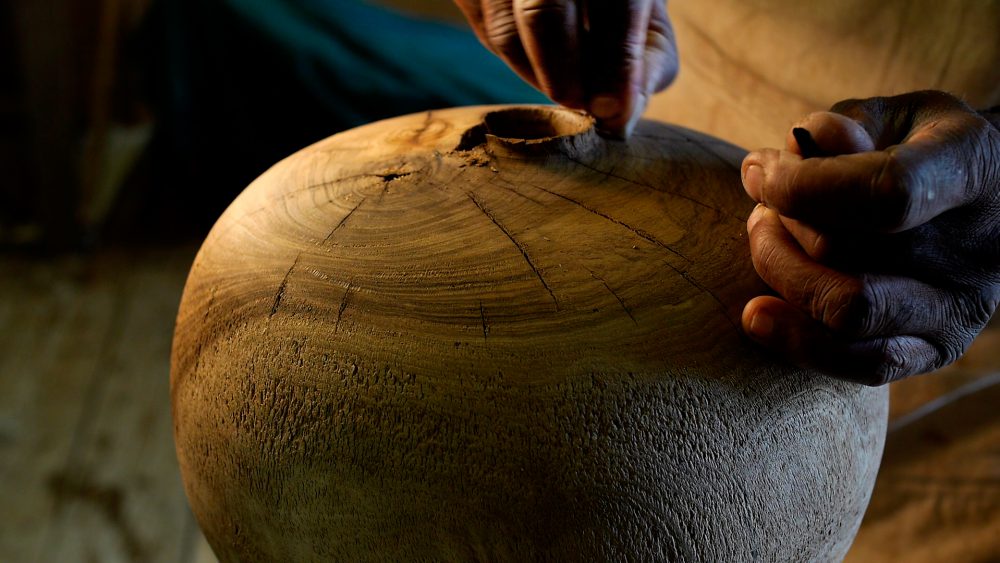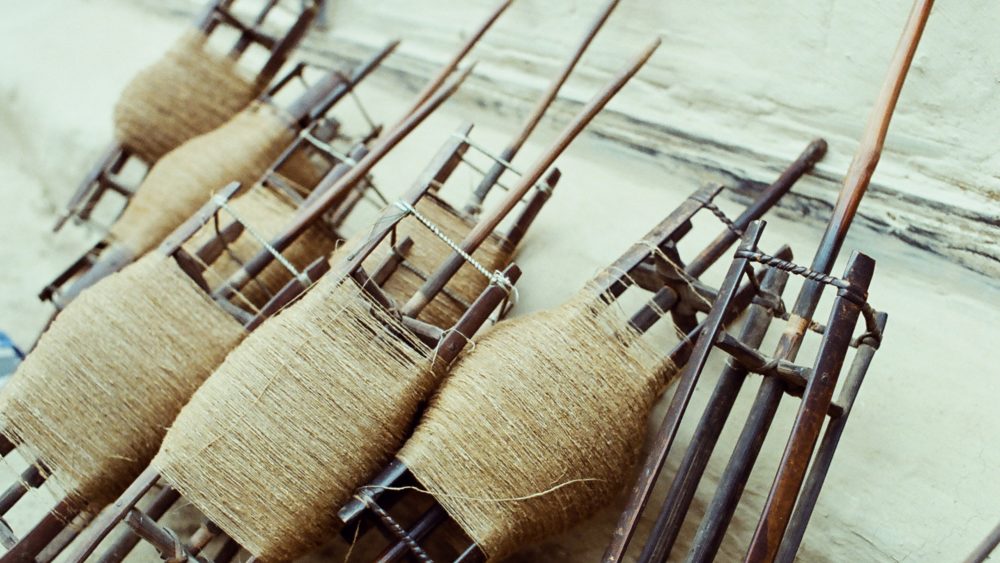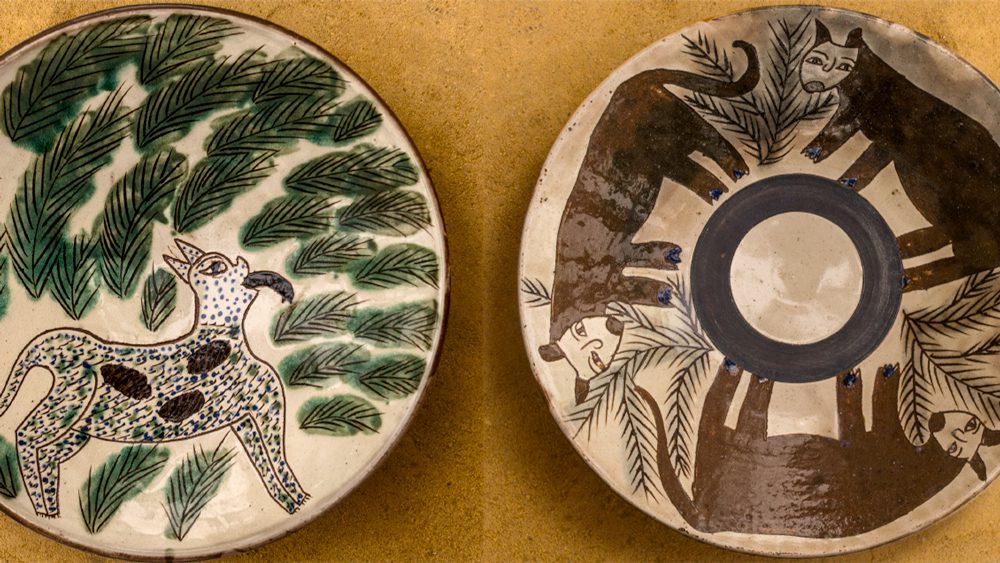Between the bustle of Bangalore and Mysore lies the small city of Channapatna. known, in Kannada, as Gombegala Ooru, or the “Land of Toys”. It has a 200-year-long history in the art of toy making which can be traced to the reign of Tipu Sultan, ruler of the Mysore in the 18th century. It is believed that it was this ruler who invited artisans from Persia to train local artisans in making lacware toys. The term “lacware” refers to wooden articles turned on a lathe and finished with a natural resin called lac. This technique is safe for children as it is done using traditional, non-toxic processes. Once a bustling toy making town “with 15,000 artisans twenty years ago, this handmade craft is in a state of serious decline with less than 3,000 artisans today” says Muralidhar from Maya Organics. The toymaking craft of Channapatna is currently protected under the World Trade Organization’s geographical indications (GI).
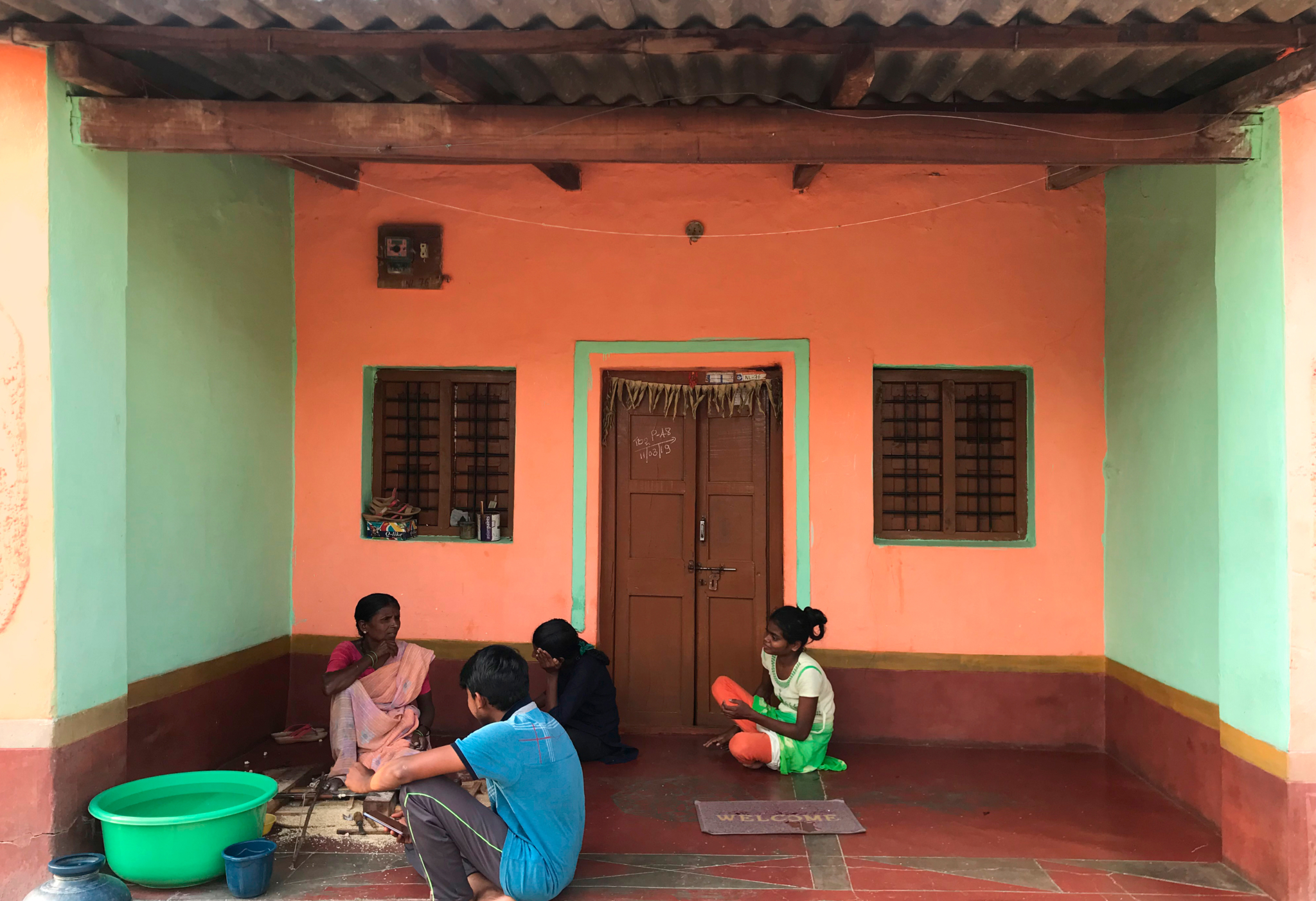
Ratnamma and her grandkids, an artisan family in their veranda in Neelasandra Village.
Cause and Effect
India's toy industry has a “meager share of 0.08 per cent of the global market of which only 30 percent are made by local Indian artisans with the rest being imported from European and far eastern markets, mainly China,” says Gangadhar, 40, a third generation skilled craftsman who has been making toys in Channapatna for 20 years. According to Gandadhar, “the influx of inexpensive machine-made Chinese toys left these colorful handmade creations ignored, leaving us makers in troubled situations. The situation did improve in between when people realized that the imported Chinese toys were made with toxic dyes and cheap materials that were unsafe for children. But it is not a beneficial job for us anymore as it earns us nothing.”
Shaheeda Bano from the Maya Organics, an initiative developed to revive the craft by supporting existing artisans to develop new skills, train new artisans and promote strategies to help the craft to in the modern competitive market, expresses her concerns for the declining craft: “The craft will vanish in less than 10 years’ time.”
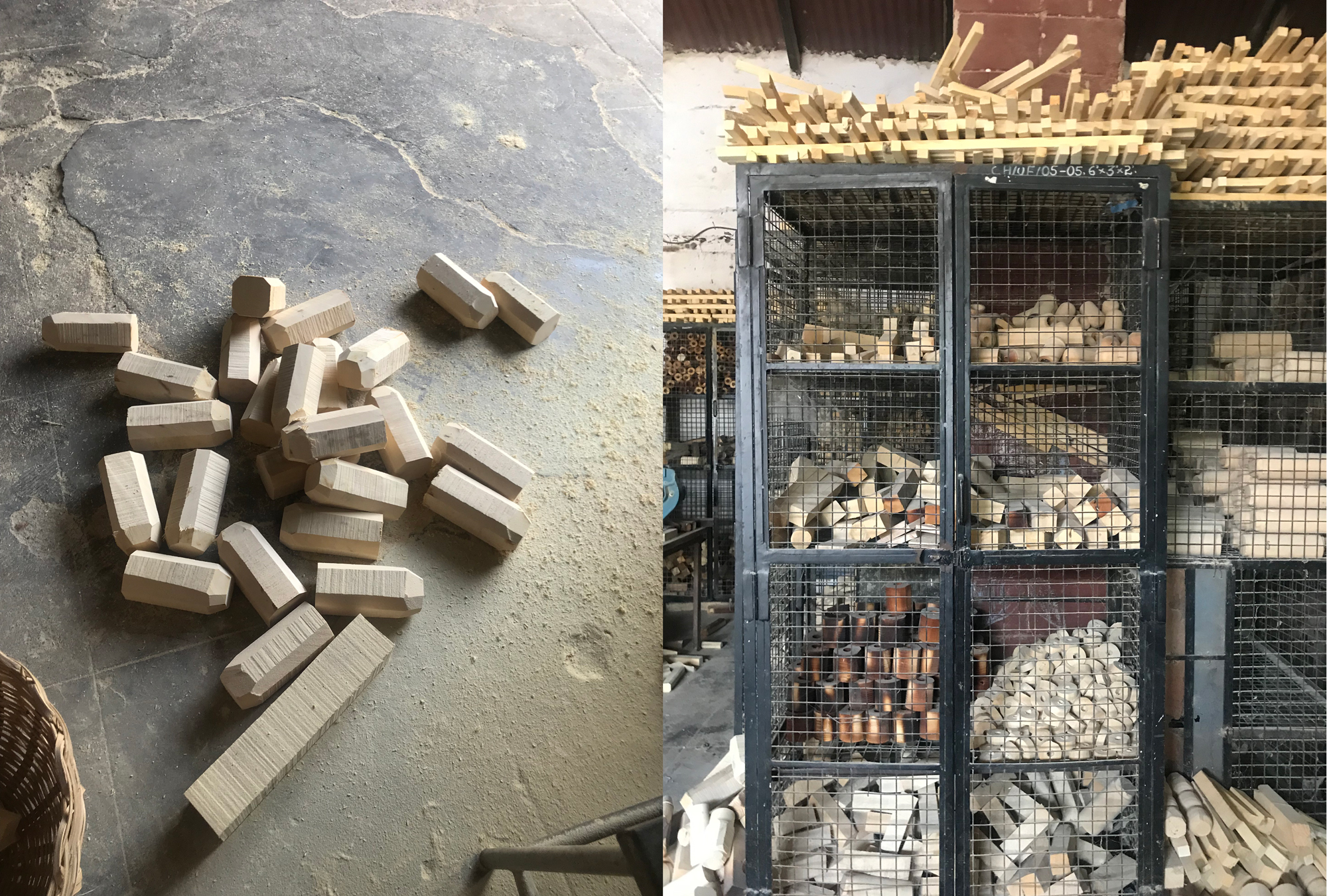
Ivory wood cut, seasoned, and stored at Maya Organics.
Apart from global issues such as influx of Chinese toys that has severely pummeled the craft, Bano explains some of the other issues are more local “with Channapatna being a semi urban area located between two major hubs Bangalore and Mysore, people find opportunities in these cities for higher paid jobs as the artisans don’t get regular orders anymore. Few others who live in the town are not motivated to continue the craft as it is not viable and have started to develop other small businesses like local teashops, groceries, cooking stalls, etc. There are no new craftsmen willing to learn this craft and the skills are not being passed on to their children as they want them to do jobs that pay them well.” Mallikarjun C, for example, is the son of 60-year-old toymaker Giridhar. He has followed his father and become a craftsman, but moonlights as a barber to support his daughter’s dream of becoming an engineer.
Bano goes on to explain that the craft has had so many ups and downs that the artisans find it hard to rely on it for their livelihood. Initially the industry only catered to the local market in the state of Karnataka but productivity remained low even as demand from foreign markets rose. Small and medium enterprises emerged to serve the export market. Due to this, there were drastic changes to production demands on the artisans, their production techniques and the setting they worked in.
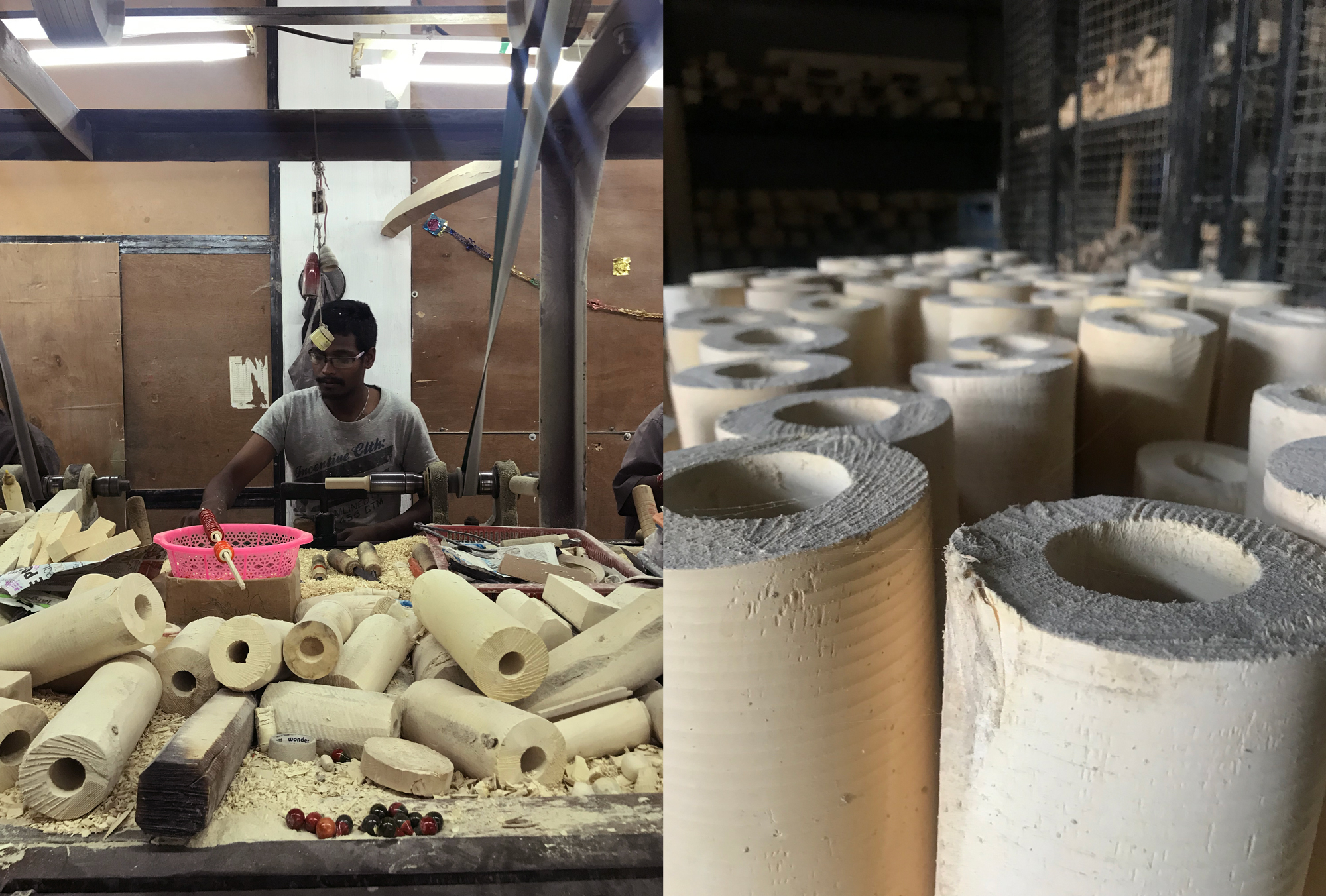
Maya Organics: (LEFT) An artisan working on a power lathe machine. (RIGHT) Naturally seasoned wood and wood seasoned in a kiln giving it a dark color stored.
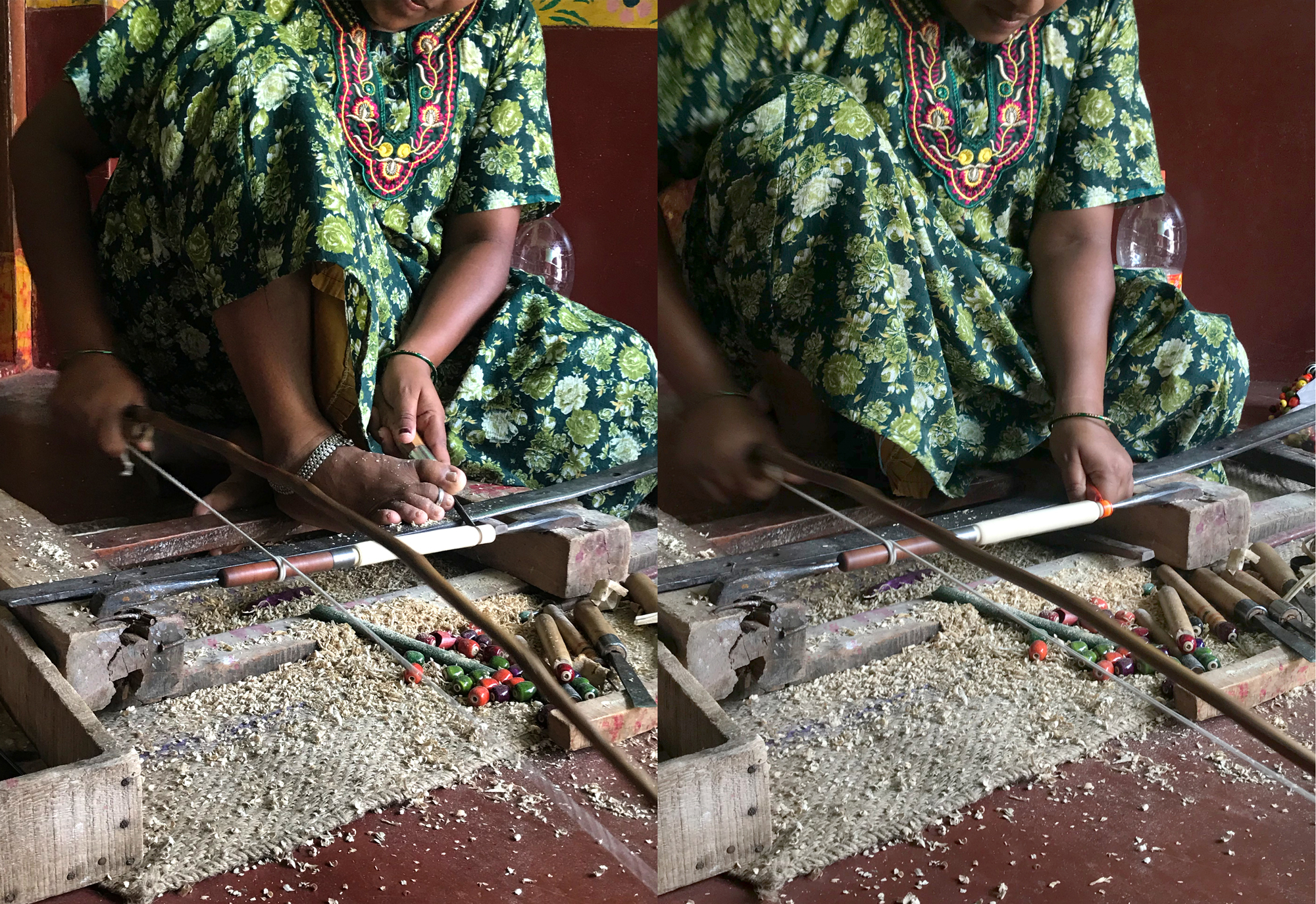
Neelasandra Village: Artisan Roopa using the hand lathe to make beads. She first fits a seasoned piece of wood on the lathe.
(LEFT) The wood is shaped using hand tools like chisel. Naturally colored lac is applied, the lac stick is pressed against the wood while turning the lathe and due to frictional heat it melts and coats the wood.
(RIGHT) A screwpine leaf is used to polish the piece.
To enjoy the full story, become a Member.
Already a Member? Log in.
For $50/year,
+ Enjoy full-length members-only stories
+ Unlock all rare stories from the “Moowon Collection”
+ Support our cause in bringing meaningful purpose-driven stories
+ Contribute to those in need (part of your membership fee goes to charities)
EDITING: COPYRIGHT © MOOWON MAGAZINE /MONA KIM PROJECTS LLC. ALL RIGHTS RESERVED.
PHOTOS & TEXT: COPYRIGHT © KSHITIJA MRUTHYUNJAYA. ALL RIGHTS RESERVED.
TO ACQUIRE USAGE RIGHTS, PLEASE CONTACT US at HELLO@MOOWON.COM
